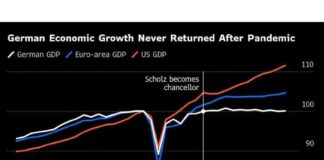India has emerged as a key player in global migration trends, particularly for Hindu migrants, according to a recent report by the Pew Research Center. In 2020, India topped the list as the leading country of origin and destination for Hindu migrants, with 7.6 million Hindus born in India now residing elsewhere, and approximately three million Hindus born in other countries calling India home.
The report, titled ‘The Religious Composition of the World’s Migrants’, shed light on the fact that Hindus, despite being a significant religious group, are underrepresented among global migrants, making up only 5 per cent of the migrant population compared to their 15 per cent share of the total global population.
Religion plays a crucial role in shaping migration patterns, influencing both the decision to leave one’s homeland and the reception in the destination country. The Pew Research Center’s analysis revealed that more than 280 million people, or 3.6 per cent of the world’s population, were living as international migrants in 2020.
India stands out among countries with a high proportion of emigrants belonging to religious minorities. For example, Christians, who make up 2 per cent of India’s population, constitute an estimated 16 per cent of Indian-born migrants now residing elsewhere. This disparity highlights the unique challenges faced by religious minorities in India when it comes to migration.
Furthermore, India is the second-largest source of Muslim migrants, with 6 million Muslims living abroad. Despite Muslims comprising only 15 per cent of India’s population, they account for an estimated 33 per cent of all Indian-born migrants. Many Indian Muslim migrants choose to reside in Muslim-majority countries in the Gulf region, such as the UAE, Saudi Arabia, and Oman, where job opportunities are plentiful.
The Gulf Cooperation Council (GCC) countries, including Bahrain, Kuwait, Oman, Qatar, Saudi Arabia, and the United Arab Emirates, are home to a significant number of Indian migrants, totaling 9.9 million as of 2020. The report highlighted that the migrant population in the GCC countries has seen a substantial increase of 277 per cent since 1990, with Muslims comprising 75 per cent, Hindus 11 per cent, and Christians 14 per cent of the migrant population.
The Pew Research Center’s analysis, based on data from the United Nations and 270 censuses and surveys, provides a comprehensive overview of the religious composition of the world’s migrants. This data helps to better understand the complex dynamics of global migration and the role of religion in shaping migration patterns.
Factors Driving Hindu Migration from India
Several factors contribute to the significant number of Hindu migrants from India. Economic opportunities play a crucial role in driving migration, with many Hindus seeking better job prospects and higher wages abroad. The Gulf region, in particular, has been a magnet for Indian migrants due to its booming economies and demand for skilled labor.
Social and political factors also play a part in Hindu migration from India. Discrimination and persecution based on religion can push Hindus to seek refuge in other countries where they can practice their faith freely without fear of persecution. Additionally, political instability and conflict in certain regions of India may prompt Hindus to seek a safer and more stable environment elsewhere.
Cultural and educational factors can also influence Hindu migration patterns. Many Hindus may choose to migrate to countries with strong Hindu communities and cultural ties, where they can maintain their cultural traditions and heritage. Education is another driving force behind migration, with many Hindus seeking quality education opportunities abroad for themselves and their children.
Challenges Faced by Hindu Migrants
Despite the opportunities and benefits of migration, Hindu migrants face a myriad of challenges in their host countries. Cultural differences, language barriers, and discrimination can make it difficult for Hindu migrants to integrate into their new communities. Lack of social support networks and access to essential services can also pose challenges for Hindu migrants, particularly those who are undocumented or marginalized.
Religious discrimination and intolerance can be a significant barrier for Hindu migrants, especially in countries where Hindus are a minority. Discriminatory policies, hate crimes, and social exclusion can impact the well-being and safety of Hindu migrants, leading to feelings of isolation and alienation.
Economic challenges, such as limited job opportunities, low wages, and lack of access to social services, can hinder the socio-economic mobility of Hindu migrants. Many Hindu migrants face exploitation and abuse in the workplace, including long hours, unsafe working conditions, and unfair wages.
Integration and Assimilation of Hindu Migrants
Efforts to promote the integration and assimilation of Hindu migrants into their host countries are essential to ensure their well-being and success. Providing language and cultural orientation programs can help Hindu migrants navigate their new environment and connect with local communities. Access to education, healthcare, and social services is crucial for the overall well-being of Hindu migrants and their families.
Promoting diversity, tolerance, and acceptance of different religious and cultural backgrounds can create a more inclusive and welcoming environment for Hindu migrants. Encouraging interfaith dialogue and collaboration can foster understanding and respect among diverse communities, reducing prejudice and discrimination against Hindu migrants.
Supporting the economic empowerment of Hindu migrants through skills training, job placement assistance, and entrepreneurship opportunities can enhance their socio-economic status and contribute to the economic development of their host countries. Creating pathways to legal migration and regularization of undocumented Hindu migrants can protect their rights and prevent exploitation and abuse.
In conclusion, India’s position as a leading source and destination for Hindu migrants underscores the complex interplay of economic, social, political, and cultural factors shaping migration patterns. Understanding the challenges and opportunities faced by Hindu migrants is crucial for developing effective policies and programs to support their integration and well-being in host countries.






















